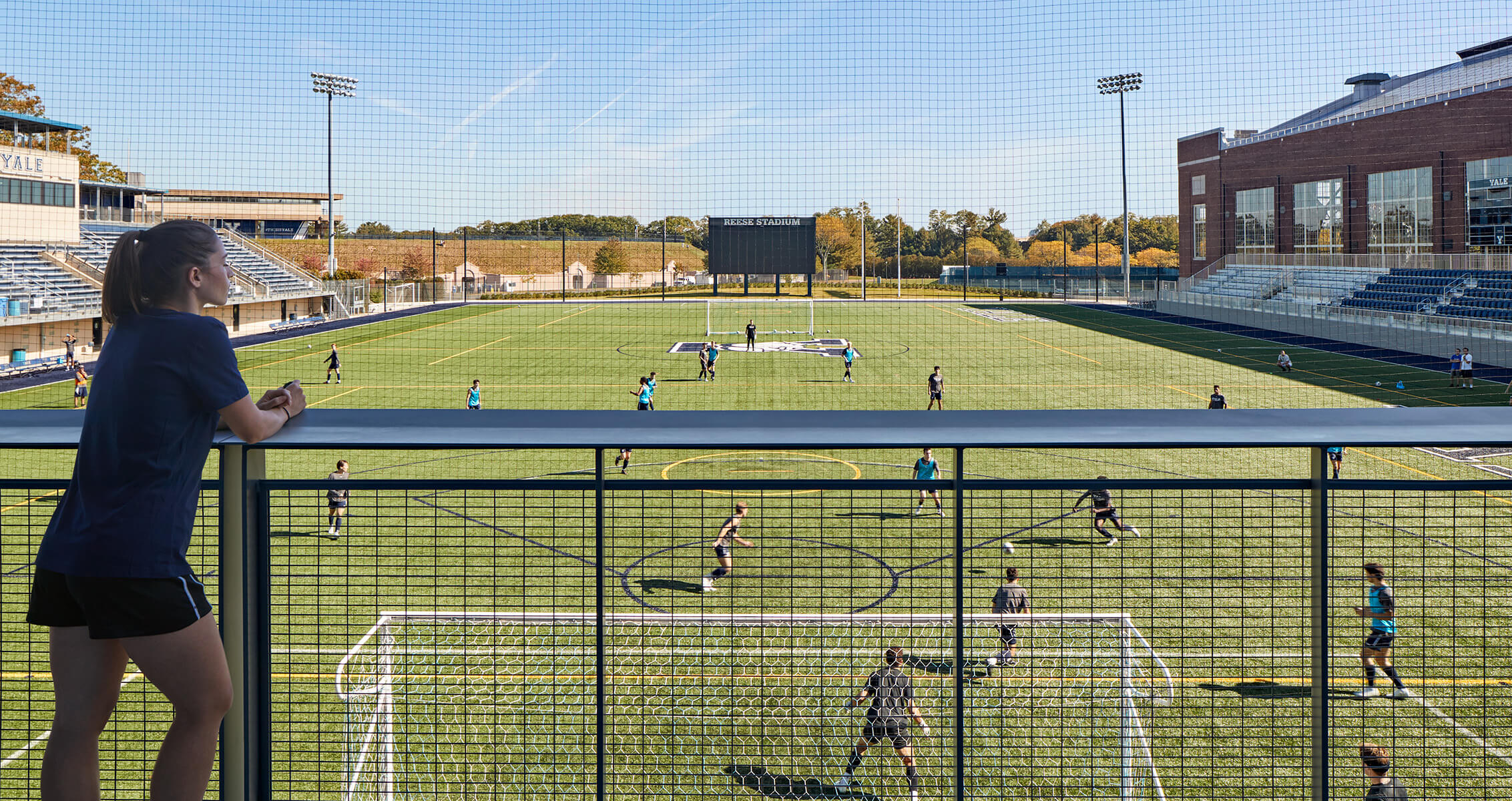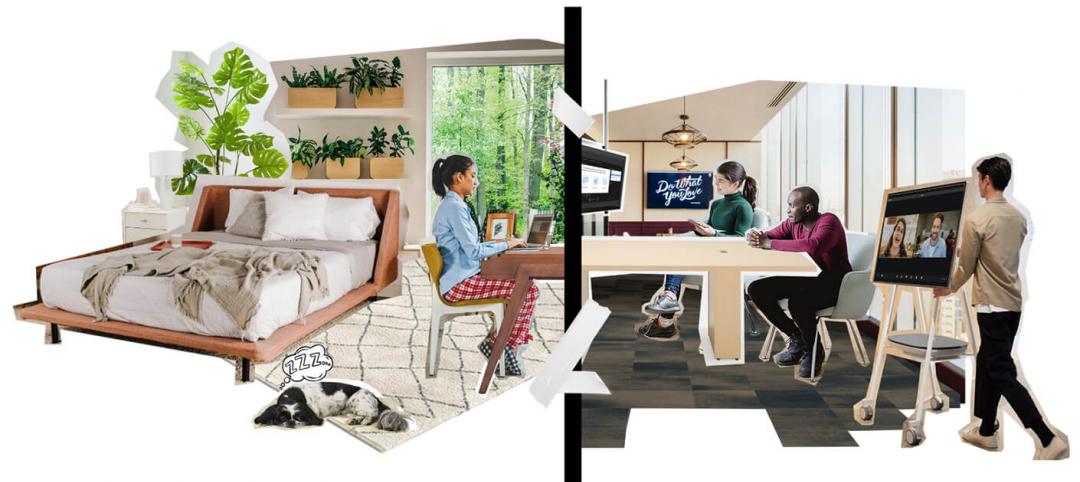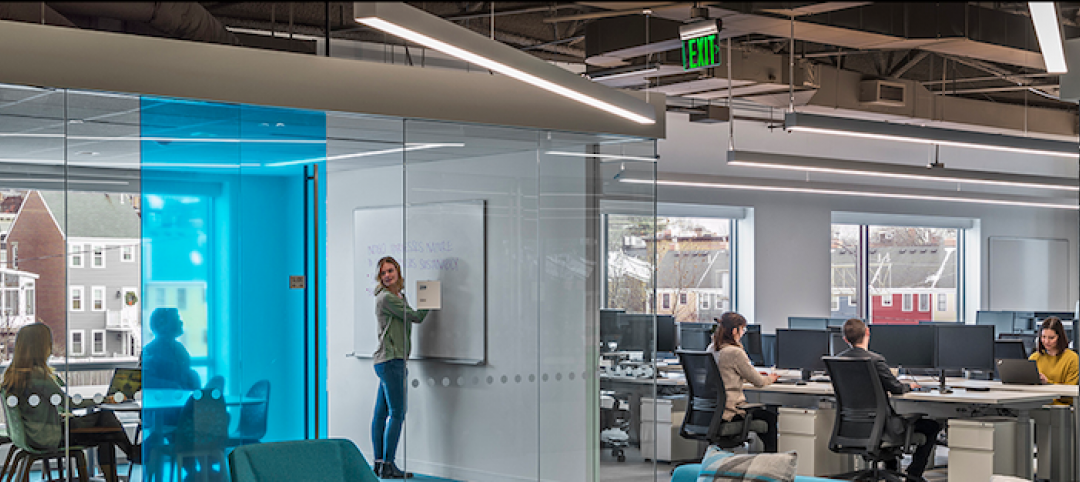Many NCAA programs are expressing a desire for a holistic approach to performance—one that thoughtfully integrates nutrition, mental health, sports medicine, hydrotherapy, diagnostics, sleep, recovery, and sport-specific strength and conditioning—all working in sync to improve athletes’ performance in the classroom and on game day.
Training facilities have evolved in response. Over the last decade, the facilities themselves have become a tool to better address the demands of players and coaches. So, how does the built environment fit into this picture? It’s an essential piece of the puzzle. Athletic directors, facility managers, training staff, and designers can enable their athletic facilities to do more for their athletes by considering three key design elements:
- Location, Location, Location
- Transparency: See and be seen
- Interior design: The finishing touch
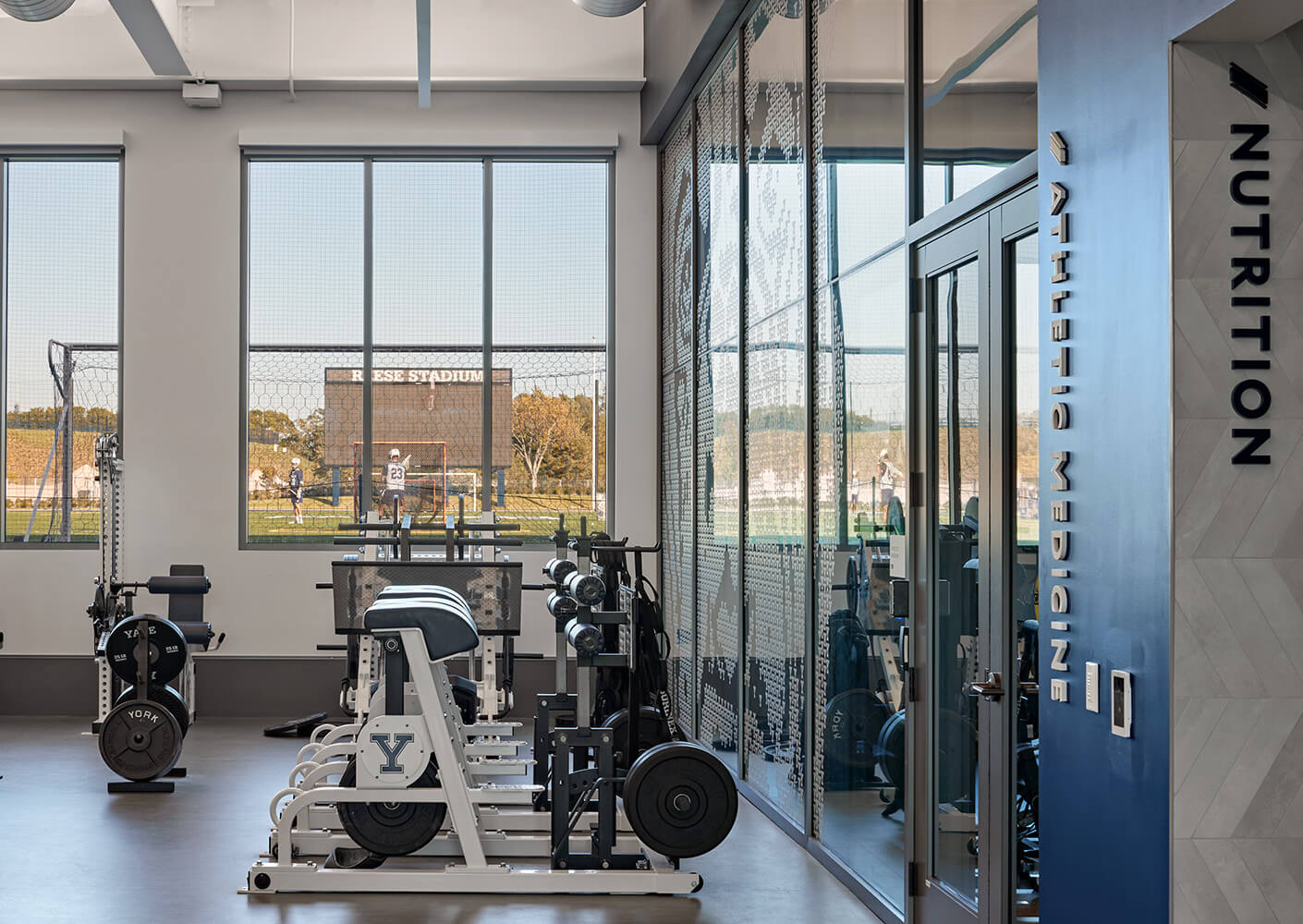
Location
Historically, sports medicine has been tucked away—often without daylight—within larger athletic facilities. Nutrition has only recently started to be integrated into a student-athlete’s routine over the past five years. Likewise, mental health services, and even having dedicated licensed professionals on staff, is only just debuting on many college campuses.
The weight room has had its glory, and it is undoubtedly a critical part of athlete training and development. But we know now that athletic medicine, nutrition, and mental health services are essential pieces of the puzzle. We must consider all facets of student athlete performance and then co-locate those content areas for efficiency, convenience, and education to encourage the highest and best use of student-athletes’ limited time and energy.
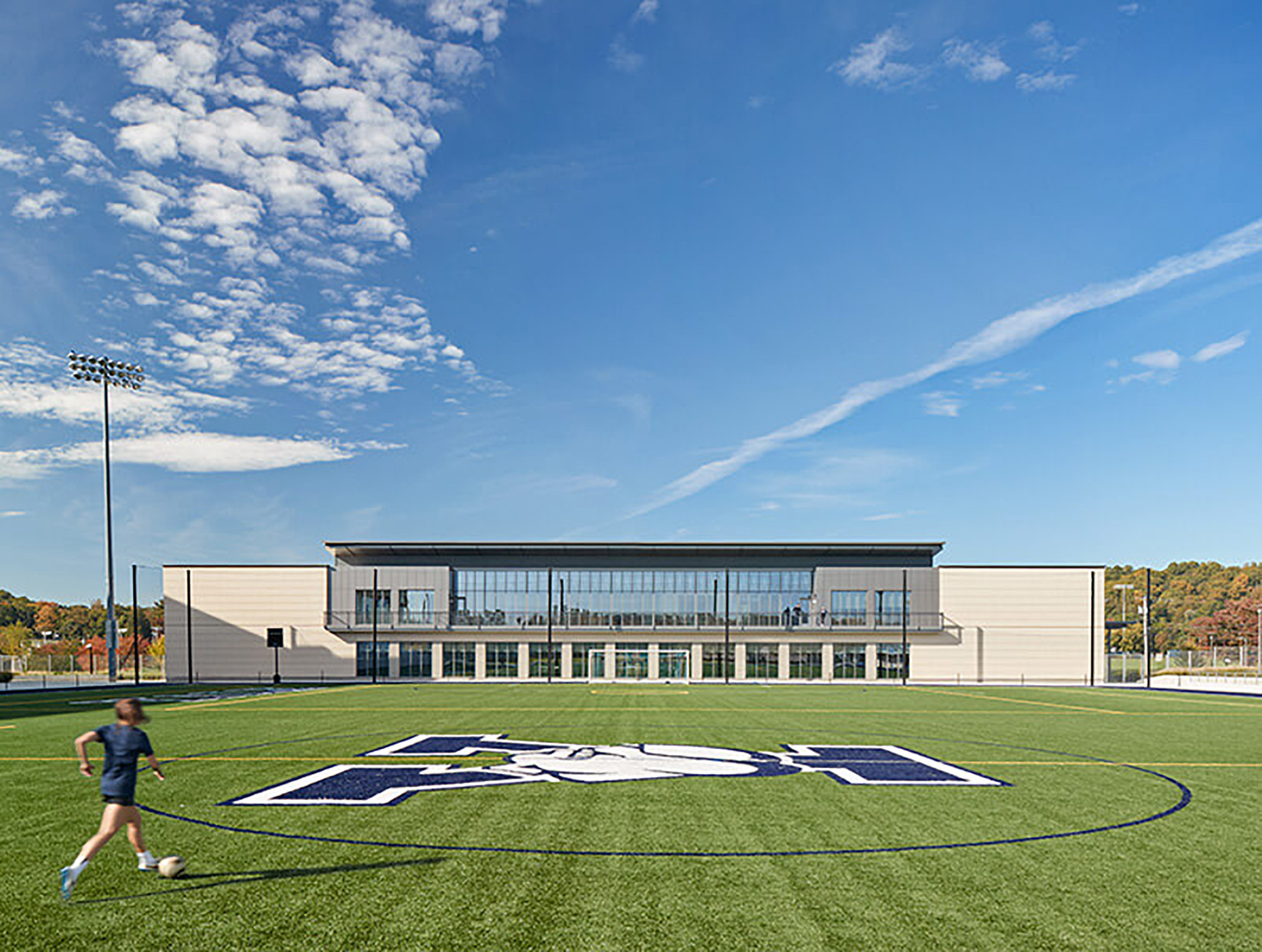
Transparency
Visually connecting these program elements enables athletes to physically see the holistic care they are receiving and instill confidence in their coaching and training staff. Transparency supports team cohesion at all levels of athlete health and performance: Strategic moments of glazing throughout a facility can help to celebrate the moments of physical demand—a new personal record in the weight room—and recovery—a teammate making strides in their injury rehabilitation journey. It can help encourage athletes to use the full spectrum of services, and make the spaces feel more approachable at the same time.
Privacy is of the utmost importance, and this remains unchanged considering the sensitive nature of health and personal development. There are ways to maintain a feeling of openness and welcoming environment while letting students know their individual privacy is not being compromised:
- Strategically incorporate film on glass into an area where some privacy is needed. Bonus: this can be an opportunity for brand activation and culture building
- Provide flexible consultation rooms that can be double as offices or be available for private conversations
- Utilize curtain areas for individual comfort control
- Incorporate translucent materials to maximize daylight where transparency is not appropriate
Views of practice and competition facilities also helps student-athletes visualize their game-day performance during training and injury rehab. Why not celebrate progress, victories, camaraderie by connecting student-athletes and teams visually between interior spaces, between the outside and inside…
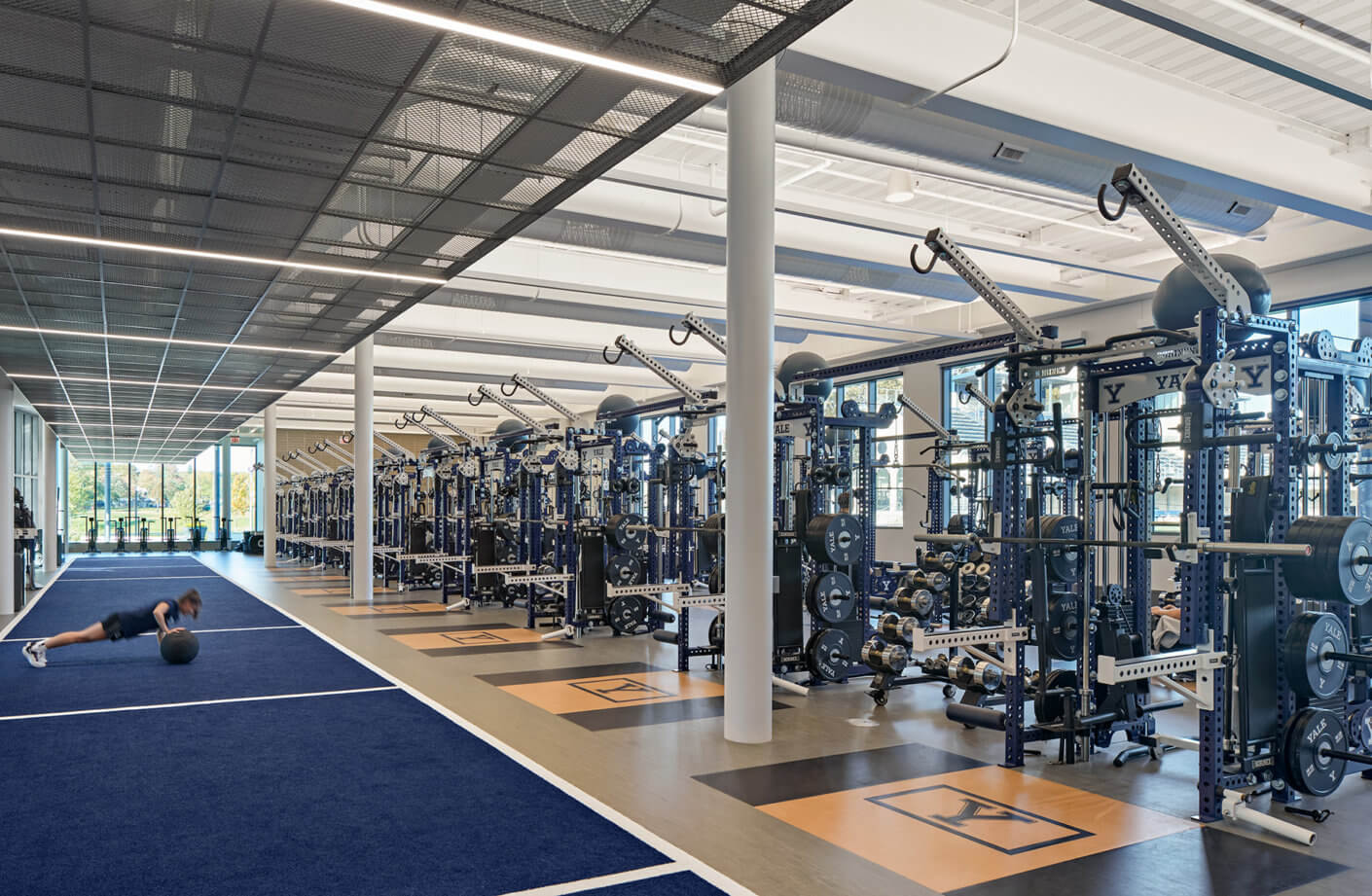

The Finishing Touch
Consistency is key. To make an approach to performance feel truly holistic, there should be unity in finishes, lighting, and messaging throughout. The individual spaces should feel like one continuous environment. Interior design will ultimately help tie it all together.
- Finishes such as flooring, tile, paint colors should be the same or closely related
- Equipment and furniture should be thoughtfully selected to enhance the design approach
- Light fixtures and color temperature should relate, while lighting levels should remain appropriate to the tasks and use of space
- A consistent design concept or idea should thread the spaces together
- Brand activation should communicate goals and influence culture
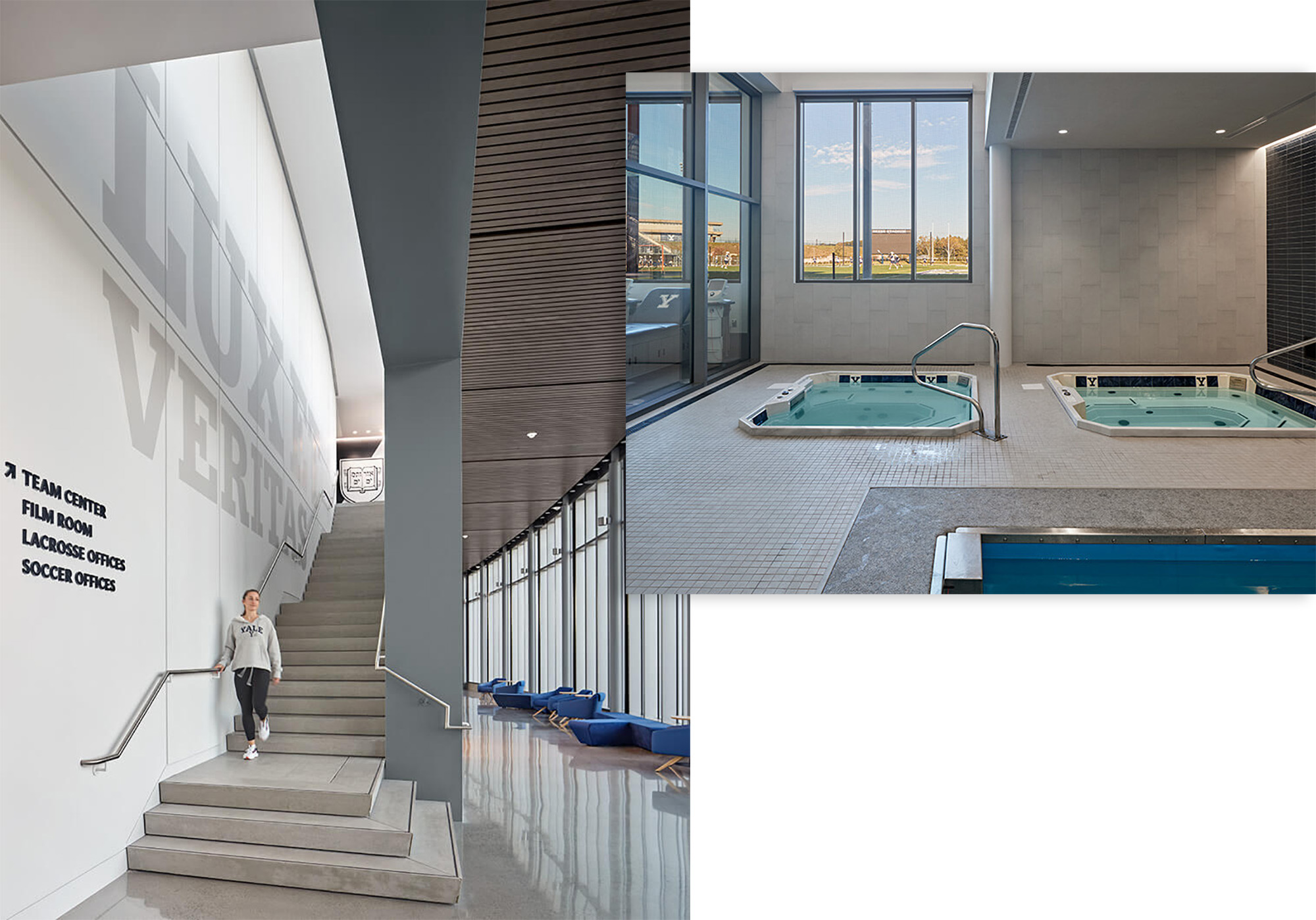
With countless demands on student-athletes, their journeys through preventative and rehabilitative care don’t have to add to stress levels. Top talent demands an atmosphere to support ambitious goals. Parents of recruits respect how a facility will enable their children to be at their best.
Coaches appreciate the efficiency of well-planned treatment and training spaces. For a truly holistic approach to performance include smart adjacencies, visual connectivity, and consistent look and feel throughout.
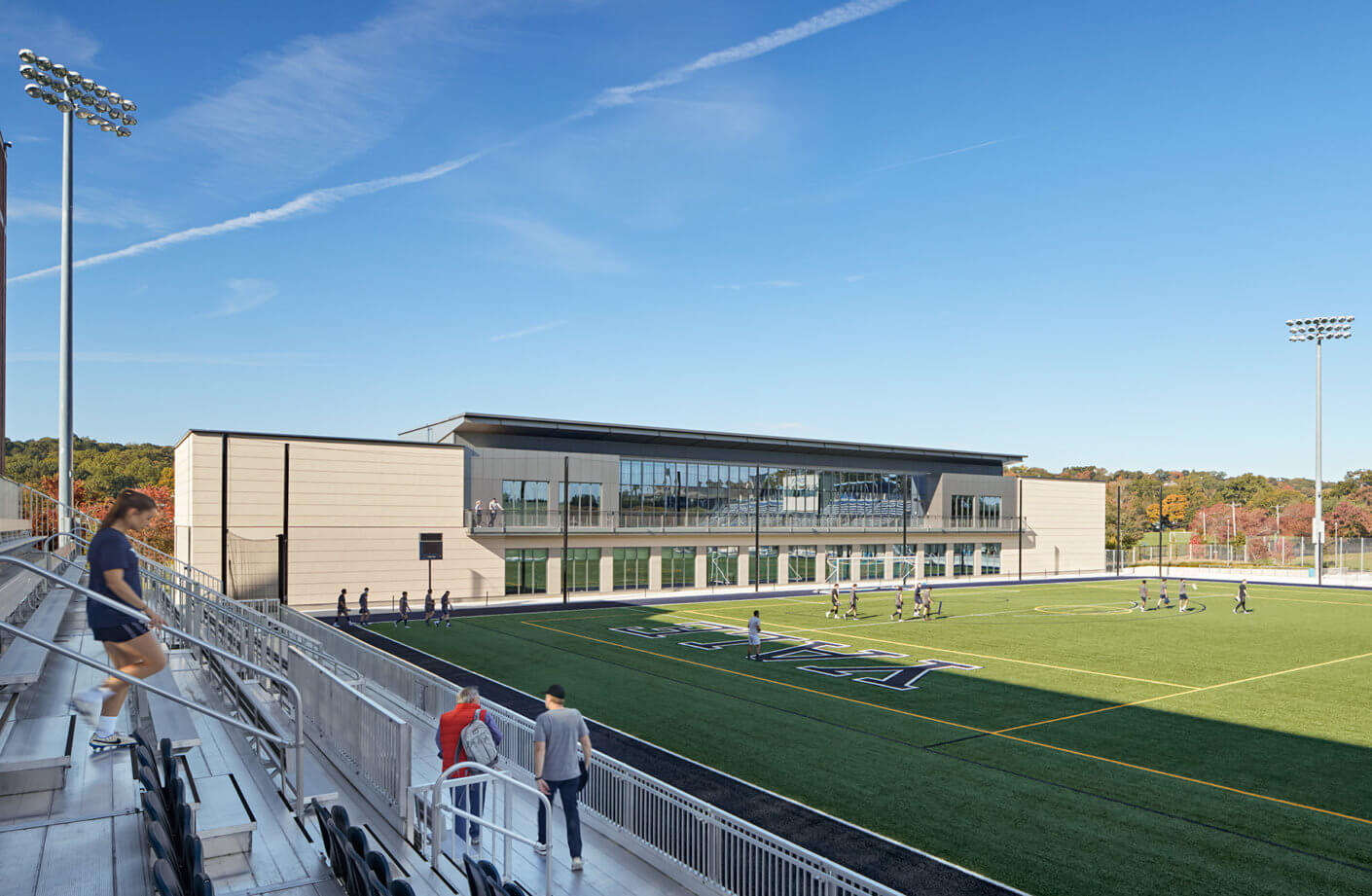
More from Author
Perkins and Will | Sep 19, 2023
Transforming shopping malls into 21st century neighborhoods
As we reimagine the antiquated shopping mall, Marc Asnis, AICP, Associate, Perkins&Will, details four first steps to consider.
Perkins and Will | Jul 20, 2023
The co-worker as the new office amenity
Incentivizing, rather than mandating the return to the office, is the key to bringing back happy employees that want to work from the office. Spaces that are designed and curated for human-centric experiences will attract employees back into the workplace, and in turn, make office buildings thrive once again. Perkins&Will’s Wyatt Frantom offers a macro to micro view of the office market and the impact of employees on the future of work.
Perkins and Will | Dec 20, 2022
4 triage design innovations for shorter wait times
Perkins and Will shares a nurse's insights on triage design, and how to help emergency departments make the most of their resources.
Perkins and Will | Aug 30, 2021
The great re-shuffle & re-think
In this new hybrid environment in which we cater to how our employees work best, how will we manage new hybrid work practices and etiquette?
Perkins and Will | May 18, 2020
Global design firms collaborate on new COVID-19 mobile testing lab to bring testing to vulnerable communities worldwide
Perkins and Will, Schmidt Hammer Lassen Architects, and Arup Group develop scalable solutions for increased testing capacity within high-density and under-served neighborhoods.
Perkins and Will | Jun 7, 2019
Workplace wellness: Top 3 tips for Fitwel certification
How can thoughtful design encourage healthier choices, lifestyles, and work environments?
Perkins and Will | Feb 27, 2019
ResilientSEE: A framework to achieve resilience across scales
Conceived in the Boston studio of Perkins+Will, the ResilientSEE team developed a resilient planning framework that can be applied to other neighborhoods, cities, and countries.
Perkins and Will | Nov 28, 2018
Amazon HQ2 and the new geography of work
The big HQ2 takeaway is how geography and mobility are becoming major workplace drivers.
Perkins and Will | Sep 4, 2018
It takes more than money to fund resilience
Resilient design, much like all projects in the built environment, requires funding.
Perkins and Will | Aug 13, 2018
There's more to the open office than headlines suggest
A study found that contrary to popular belief, the open office did not encourage—but rather, inhibited—face-to-face communication.

